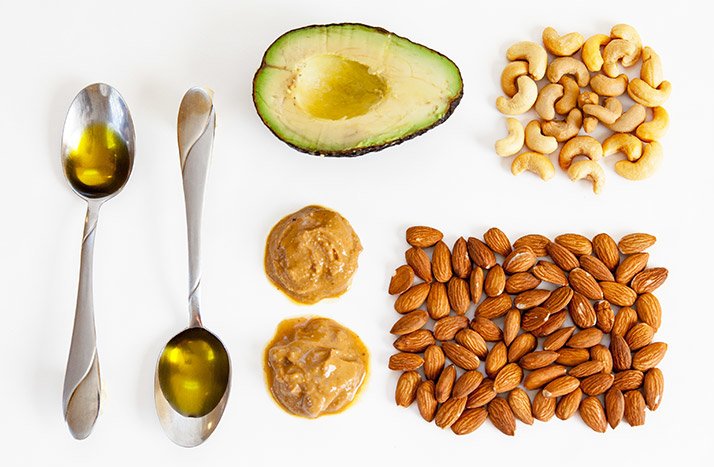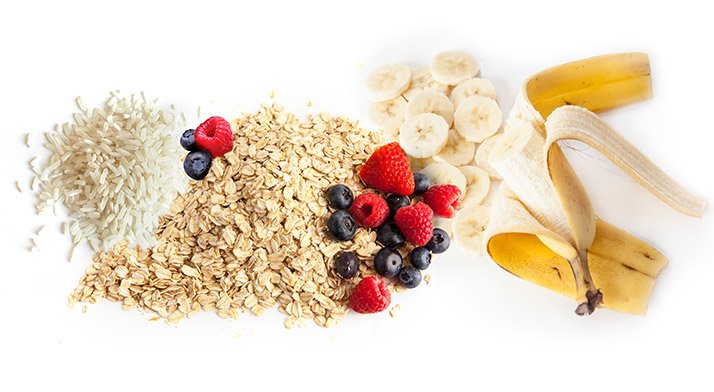
How To Lose Weight And Keep It Off!
You just completed a Transformation Challenge and achieved your best self. Congratulations! Here's how to maintain your hard-earned physique.
What happens during a diet?
The short answer: Your metabolism slows, weight drops, and hunger skyrockets.
The long answer: Numerous physiological and hormonal changes occur in an effort to fight your fat-loss efforts.
That's because your body is most comfortable within a set body-fat percentage range, known as your "body-fat set point." When you attempt to move out of this range—which you just fought to do during your diet—your body begins to initiate several adaptations to get back into its comfort zone.
So if you just finished a transformation, your body might very sneakily try to get you to return to your old weight, the one you worked so hard to ditch. I'm here to help you avoid that fate. The secret to avoiding rapid unwanted weight gain and maintaining your hard work? A reverse diet.
What Is a Reverse Diet?
A reverse diet is exactly what it sounds like. It's a carefully planned, well-thought-out approach to gradually increasing—rather than decreasing—calories in an effort to accomplish the following goals:
- Restore a sense of normalcy within your body and reverse the metabolic and hormonal adaptations that occurred throughout the diet.
- Provide you with a break from the mental and physical rigors of dieting.

By increasing calories in a controlled manner, your metabolism will begin to revert back to pre-diet levels, and your hormones levels will start to normalize.
Priority 1: Increase Calories
Regardless of what diet your used to lose weight, the first step to transitioning out of a diet is increasing your calories. Adding calories should look something like this:
| Week | Calorie Increase |
|---|---|
| Week 1 | 10-20% |
| Week 2 | 5-10% |
| Weeks 3-8 | 5-10% every 1-3 weeks |
| Weeks 9-12 | 2-5% every 1-3 weeks |
After you take your final progress photo or rock the competition scene, go out and enjoy a "free" meal. Don't think about portions or macros—eat foods you enjoy, and appreciate the meal. You've just completed weeks or possibly months of a very regimented approach. This is both physically and psychologically demanding. A carefree meal will provide you with that long-overdue psychological relief.
But the next day, it's time to dial your nutrition back in. Rather than resuming your end-of-diet calories, increase your daily calorie total by 10-20 percent. The longer or harsher your diet, the closer to 20 percent your caloric addition should fall. for instance, if you ended your diet consuming 1,500 calories per day, bump it up to 1,650-1,800 calories.
After the first two weeks on your new calorie amount, increase your calories again, this time by 5-10 percent. Repeat this bump once your body weight begins to plateau. This usually occurs 1-3 weeks after making an adjustment. Continue with this approach until you complete at least eight weeks of reverse dieting.
Your goal should be to gain 0.25-0.75 percent of your body weight per week for the first four weeks. If you're under 160 pounds, this amounts to 0.5-1.5 pounds per week; if you're between 160-200 pounds, this amounts to 1.0-1.5 pounds per week. If you find you're gaining faster than this, simply hold off until your weight settles before adding in more calories. If you find that your weight drops, or remains steady despite the increase in food, increase your calories sooner rather than later.
After eight weeks, it's time to reassess your progress and next steps. At this point, you should have significantly increased the amount of food you're eating while remaining within 3-6 percent of your end-of-diet body weight.
Goal Weight Range
| Final Weight | Reverse Weight |
|---|---|
| 120 | 122-126 |
| 140 | 143-147 |
| 160 | 163-168 |
| 180 | 184-189 |
| 200 | 204-210 |
| 220 | 224-231 |
At this point, if you're happy with your energy, wellbeing, and food intake, hold steady. If you're not yet satisfied, continue to add another 2-5 percent of calories every few weeks as you see fit. Within 12 weeks, you should be near your prediet macronutrients but at a much lower weight.
Priority 2: Adjust Macronutrients
Now that you know how many calories to add back in and when, it's time to turn your attention to which macros to add, and when.
Low-Fat Diet: If you followed a low-fat diet to achieve your weight loss, increase your calories from fat alone initially. Chances are your prolonged aversion to dietary fat has taken a toll on normal hormone production and regulation. This results in low testosterone, low sex drive, irregular menstrual cycles, and even a complete loss of your menstrual cycle. Work toward a sense of normal as soon as possible. Adding fat back in will help get you there sooner.1-3

Low-Carb Diet: If you followed a low-carbohydrate/moderate-fat approach, boost calories by way of a 50-50 percent split between carbohydrates and fat initially. This well help to provide you with an immediate boost in energy via the addition of carbs, and also allow you to quickly raise calories with calorie-dense fat.
Regardless of your approach, it's not unusual to see a large fluctuation on the scale when initially adding food. This is especially true when adding carbohydrates. Carbohydrates bring water into the cells as well, and more water means more weight. Don't fret about the scale the first few weeks. Your weight will even out in time.

Why Reverse Dieting Is Harder Than Dieting
Many people find reverse dieting harder than dieting. Surprised? "How can it be harder when I'm eating more food?" you're probably thinking to yourself.
As you begin increasing your food intake, your metabolism and energy levels begin to trend upward. So does your appetite. But because you're still consuming a fairly low amount of food compared to your prediet amounts, your appetite may overthrow your grit and self-discipline, leading to a midnight bender of peanut butter and Wheat Thins.
Furthermore, your months of regular dieting culminated in a single day or event, and as a result, you lack motivation and self-discipline because you're no longer working for a specific goal. This reduces your motivation to stick to such a rigorous plan, because you're no longer working toward anything. You hit your end goal and now want to hit your favorite restaurant...on the reg.
Strategies to Enhance Reverse-Diet Success
Whether it's a new strength PR or a record number of repetitions for a specific bodyweight exercise, invest your time and energy in a number not displayed on your scale. Honing in on another specific goal will reduce the likelihood that you half-ass your nutrition and training over the next several weeks and let your weight spiral out of control.
I also encourage you to enjoy a weekly free meal. The weekly reprieve from macro managing and protein portioning will provide a nice psychological break from dialing in your macros at each meal during the week. This frequent and anticipated break from structure will recharge your motivation to push hard the following week.
Your reverse diet should last a minimum of eight weeks. However, the longer and harsher your diet, the longer your reverse diet should be. You must prioritize ample time to help restore some of the previously diet-induced metabolic and hormonal adaptations and allow enough time to increase food intake to a reasonable level.
References
- Rossow, L. M., Fukuda, D. H., Fahs, C. A., Loenneke, J. P., & Stout, J. R. (2013). Natural bodybuilding competition preparation and recovery: a 12-month case study. Int J Sports Physiol Perform, 8(5), 582-92.
- Mäestu, J., Eliakim, A., Jürimäe, J., Valter, I., & Jürimäe, T. (2010). Anabolic and catabolic hormones and energy balance of the male bodybuilders during the preparation for the competition. The Journal of Strength & Conditioning Research, 24(4), 1074-1081.
- De Maddalena, C., Vodo, S., Petroni, A., & Aloisi, A. M. (2012). Impact of testosterone on body fat composition. Journal of cellular physiology, 227(12), 3744-3748.
